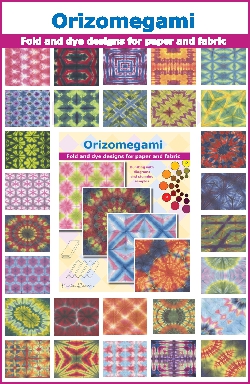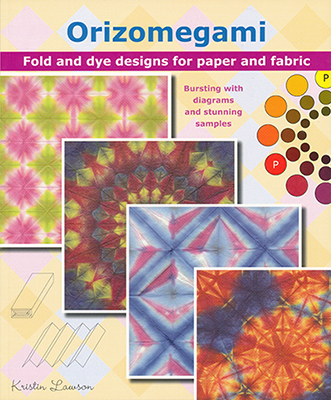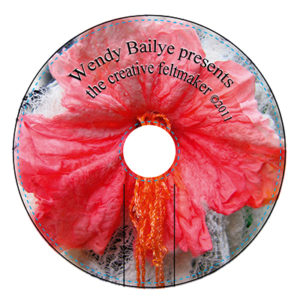Orizomegami – Fold and dye designs for paper and fabric
$19.95
Orizomegami is essentially paper that has been folded and then dyed to produce a pattern when the paper is unfolded. Folding and dyeing paper is not a new idea – it has been practiced in Japan and around the world for centuries.
If you work with fabrics, you will notice similarities between orizomegami and the Japanese fabric dyeing techniques of shibori or itajime.
The basic technique is simple, producing beautiful papers and fabrics – even if you only have a smidgen of artistic ability.
For more information please click on the “Description” button below.
In stock
Description
Orizomegami has a life of its own – you can only control the final result so much. Each paper or fabric that you dye is completely unique and a surprise when you unfold it and the pattern is revealed.

Unlike many other crafts, you probably have many of the inexpensive materials needed around the house already. It takes only minutes to set up (and clean up), can be completely non-toxic and fume free (depending on what dyes you choose), and even a 5-year old can produce beautiful results.
Most modern orizomegami papers are made using only a few basic folds and the most basic application methods. This book takes a much deeper look at the art of orizomegami and explores more of the possibilities. Consider this book a jumping-off point, or a creativity-booster. There are infinite numbers of fold and dye possibilities awaiting discovery!
Book Review by Elsie Law:
Orizomegami is the Japanese art of decorating papers by folding and dipping them into dye solutions to create a pattern when the paper is unfolded. In this book, Kristin Lawson takes us further by also using fabrics as the material which is dyed, and creating some quite intricate patterns not normally associated with modern orizomegami. She explains that modern orizomegami papers are made using only a few basic folds and the most basic application methods. Here she takes a much deeper look at the art of orizomegami and explores more of the possibilities.
Thankfully, the materials you will need for orizomegami are quite inexpensive, and you probably have many of them at home already. Kristin guides us through the materials in quite some depth: the dyes, the papers, the fabrics, containers to use, resists that can be used, and more.
I love the opening sentence of the chapter Basic Techniques: “The fundamental technique of orizomegami is so simple I can explain it in one sentence: fold a sheet of paper, apply different colours of dye to the corners, edges, and surfaces of the paper, and let it dry. That’s about it.”
Of course, that is not really “about it”. There is a saying: “It’s all in the detail.” Kristin takes us through some basic folds, complete with easy to follow diagrams, before going on to explain dye preparation in its myriad of forms, pre-treatments, dye application, unfolding your new creation, and finishing off. She provides 16 large colour photographs of dyed papers using the basic fold examples—and in reality, the results look anything but basic.
The largest section of the book is the more complex folds and includes some project ideas. Each complex fold, and there are 22 of them, is explained through the use of diagrams and the resultant pattern illustrated with two large photos of the finished design. Pages 28 and 29 of this issue of Embellish contain an extract from this book—the owl fold.
The beauty of this book is that no matter your dyeing ability, you are sure to get some striking results. Each piece of paper or fabric that you dye will be a completely unique result. Watch out! You are bound to be hooked!
Elsie Law
Additional Information
| Weight | 0.2500 kg |
|---|---|
| Shipping Group |
Reviews (0)
You must be logged in to post a review.







Reviews
There are no reviews yet.